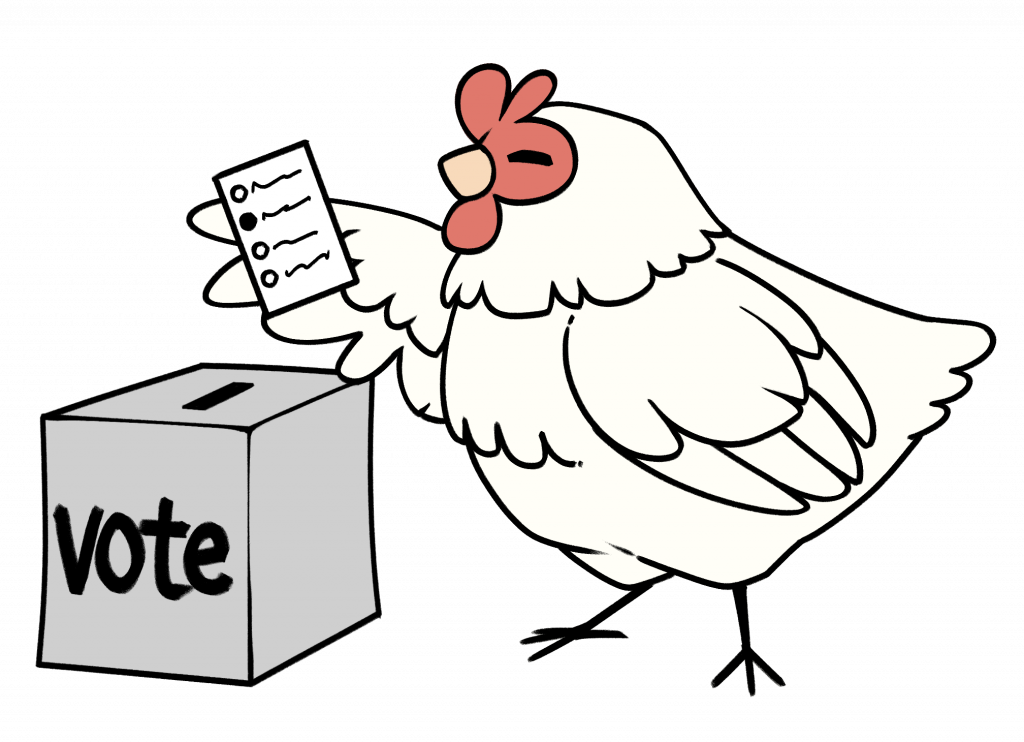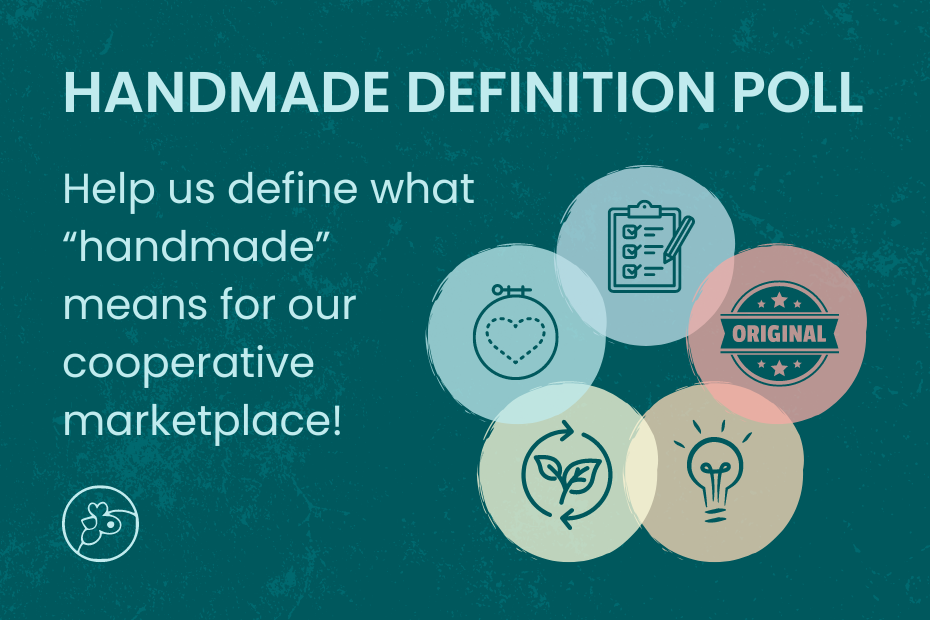Designing a Marketplace for the People Who Use It
This poll closed February 26, 2023. Read the results!
We created a survey to learn your opinions on what kind of artisans and products to include on the Artisans Cooperative handmade marketplace. We want to create a better handmade online shopping experience for Artisans, Supporters, and Partners alike – and that starts with you!
In this post, we’ll talk about why we developed a “handmade” definition survey, and give the background on how the poll was developed.
The poll was released on February 13, 2023 and will run for two weeks, closing on February 26. It should take 10-15 minutes to complete.
Don’t like surveys? We’re offering an interview option instead!
Why Poll
In our quest to develop a fair and inclusive marketplace, we are following the principles of platform cooperativism. One of the most important amongst them, is that the marketplace needs to be designed for and by the people who will use it.
Our challenge as artisans and shoppers is how to define what kinds of products we want to allow on our cooperative marketplace. One of the biggest criticisms of Etsy, and one of the petition complaints during the #EtsyStrike, is that Etsy has allowed on too many non-handmade goods, which unfairly compete with authentic handmade sellers.
But what does “handmade” mean anymore, in the context of a handmade marketplace? The words “handmade” and “handcrafted” are increasingly popular and hard to define.
In dictionaries, “handmade” definitions focus on manual labor and hand tools. But many of today’s genuine artisans use at least power tools (why use a screwdriver when you can use a drill?) and sometimes machines.
In popular culture, marketing, and advertising, the meaning of the word has been stretched. When fast food restaurants — an industry famous for production-line assembly — are making “signature crafted artisan” sandwiches and beverages, the word has been at least somewhat warped, saturated and diluted.
This is where the survey comes in. The answers to the survey will guide our Governance team in developing the bylaws and governance docs. These results tell the organizers what kinds of products we all want to see on the marketplace.
The purpose of this difficult project is to:
- Get usable opinion data from our followers on what they consider “handmade”, and what kinds of artisans they think should be in a handmade marketplace. The poll data should tease out the boundaries of “handmade” with some problematic examples, and examine the elements of a definition.
- Use survey data to come up with:
- an enforceable definition of “handmade” (or another, more appropriate word)
- a fair, easy, and accessible validation/verification for new authentic artisans that also flags out any potentially problematic applicants
- an enforcement and appeals process to ensure fairness and accessibility for all

How the Poll Was Developed
The organizers at Artisans Cooperative met during the #EtsyStrike, when Etsy sellers began to publicly articulate their grievances and major complaints with the platform. Spontaneous conversations sprung up on the Etsy Strike Discord and Reddit with honest and raw comments and ideas. The strike was the trigger that finally began to connect artisans with each other.
Much of the conversation was focused on the frustration both sellers and customers have with non-handmade goods on the Etsy marketplace. This may be partly due to a handmade policy that is too broad, but is definitely also due to lax enforcement. Early-on, in the 2010’s Etsy made some decisions about 3rd party production partners that sellers didn’t have a say in. What would they have voted for, if they had been given the chance?
Our organizers tracked those raw comments and ideas, and other important information from artisans and customers shared in social media and the news for months during and after the strike, from April to November of 2022. We researched existing handmade policies carried by many other handmade marketplaces, including Etsy’s and how it has changed through the years. In addition, we consulted books and texts intellectually exploring the tradition of craft and meaning of workmanship, including:
- Craft: An American History by Glenn Adamson
- The Nature and Art of Workmanship by David Pye
We then assembled these ideas into lists:
- handmade characteristics
- alternatives to the word ‘handmade’
- examples of sellers and products that challenge the spirit of handmade
Those lists were then simplified to make poll questions concise and targeted, with a series of questions on a scale of 1-7, and other questions about what should be included in our marketplace. These touch on hot-button issues like:
- Print-on-Demand (POD)
- Vintage
- AI art
- NFTs
- 3rd party production partners
- 3rd party fulfillment services
Draft poll questions were reviewed by the organizers as a team, data analyst Olga Prushinskaya from the Democracy at Work Institute, and finally, by our advisor Danny Spitzberg to ensure we had a valid survey. Danny is one of the contributing essay writers for the book on platform cooperativism stewardship, Ours to Hack and to Own, edited by Professor Nathan Schneider.
This poll is to help us imagine what a genuinely handmade marketplace could be. Which kinds of products and artisans do you want to see? Which do you not want to see?
About Artisans Cooperative
We are growing an online handmade marketplace for an inclusive network of creatives: a co-op alternative to Etsy.
Shop the marketplace!

Pingback: Marketplace Priorities Poll Results | Artisans Cooperative
Pingback: Handmade Survey Results | Artisans Cooperative
Pingback: Presenting Our Handmade Policy | Artisans Cooperative
Pingback: What Makes Our Handmade Marketplace Different | Artisans Cooperative